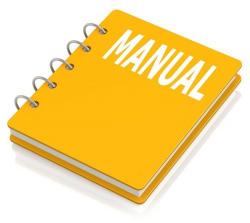Komatsu WA270 Wheel Loader Workshop Repair & Service Manual
Catalog:
Model:
Complete factory shop manual including electrical wiring diagrams for Komatsu WA270-7 Wheel Loader. It's the same service manual used by dealers that guaranteed to be fully functional and intact without any missing page to save your precious time.
This repair manual (including maintenance, overhaul, disassembling & assembling, adjustment, tune-up, operation, inspecting, diagnostic & troubleshooting…) is divided into different sections. Each section covers a specific component or system with detailed illustrations. A table of contents is placed at the beginning of each section. Pages are easily found by category, and each page is expandable for great detail. The printer-ready PDF documents work like a charm on all kinds of devices.
FILE LIST:
CEBM027600 - Wheel Loader WA270-7 Shop Manual.pdf
SEN06255-01 - Wheel Loader WA270-7 Shop Manual.pdf
SEN06255-02 - Wheel Loader WA270-7 Shop Manual.pdf
TEN00617-01 - Wheel Loader WA270-7 Shop Manual.pdf
EXCERPT:
80 Appendix - Outline of refrigeration cycle
Outline of refrigeration cycle
• Regeneration cycles are composed of the following four processes. Refrigerant circulates around the system repeatedly changing its phase from liquid o gas o liquid.
Compression (Compressor)
• The compressor sucks in the refrigerant that has been vaporized in the evaporator and compresses it into
- state where it can be easily liquefied at the ambient temperature.
• The gaseous refrigerant sucked into the compressor cylinder is compressed to a temperature and pressure at which it can be easily liquefied when cooled to the ambient temperature.
Condensation (Condenser)
• The condenser cools and liquefies the high pressure and high-temperature gaseous refrigerant sent from the compressor.
• The heat released to the outside from the condenser is called condensation heat.
• The amount of condensation heat is the sum total of the heat absorbed by the evaporator from the air in the cab and the quantity of the work applied (the value converted into a heat quantity) by compression of the compressor.
• The refrigerant liquefied in the condenser is sent to the receiver drier, where moisture is removed.
• In the compression cycle, the gaseous refrigerant and liquid refrigerant coexist.
• The temperature (condensation temperature) and the pressure (condensation pressure) at which the gaseous refrigerant is liquefied are proportional to each other.
Reference: The pressure varies depending on the condensation temperature of the refrigerant.
Expansion (Expansion valve)
• The expansion valve reduces the liquid refrigerant pressure to a level where liquid refrigerant can be easily evaporated by the throttle action (*1).
• The action of reducing the liquid refrigerant pressure to a level where it can be easily evaporated before it is sent to the evaporator is called expansion.
• The expansion valve, which reduces the refrigerant pressure, also adjusts the refrigerant flow rate simultaneously.
• The quantity of the liquid refrigerant that can be evaporated in the evaporator depends on the amount of heat (refrigeration load) to be removed under the specific evaporation temperature (evaporation pressure).
• The expansion valve controls the refrigerant feed rate so that the optimum quantity of liquid refrigerant is supplied to the evaporator.
(*1) Throttle action
• If there is a narrow section in the passage through which liquid is flowing at a constant rate, a resistance to the flow will be generated.
The liquid expands when it passes through the narrow section and rushes into the passage where the sectional area is larger, and consequently, its pressure and temperature are reduced.
• No heat is transferred from or to the outside during the throttle action.
Evaporation (Evaporator)
• The evaporator evaporates the liquid refrigerant (superheated vapor).
• The refrigerant evaporates, while absorbing an amount of heat necessary for evaporation (evaporation heat) from the air around the cooling fins (air in the cab).
• After the heat has been removed, the cooled air is sent into the cab by the blower fan, reducing the temperature inside the cab.
• The mist refrigerant that has been sent from the expansion valve coexists with the evaporated refrigerant in the evaporator
• The temperature (evaporation temperature) and the pressure (evaporation pressure) at which the liquid refrigerant is evaporated are proportional to each other.
• The compressor sucks in the evaporated refrigerant in order to keep the pressure level in the evaporator as low as possible so that the liquid refrigerant can be evaporated at a much lower temperature.
Relationship between refrigerant and defective air conditioning
• The refrigerant circulates in the refrigeration circuit while repeating the refrigeration cycle to expel the heat from inside the cab.
• If there is an insufficient quantity of refrigerant, all of it will be evaporated while it is passing through the evaporator. This causes evaporator efficiency to deteriorate, which will result in defective air conditioning.
• If there is excessive refrigerant, not all of it will be evaporated and part of it will be sucked into the compressor in liquid form, which will cause the compressor to compress the liquid and may damage the components.
• If water gets into the refrigeration circuit, it will freeze at a small hole in the expansion valve, lower the refrigerant flow, and may result in defective air conditioning.
...





